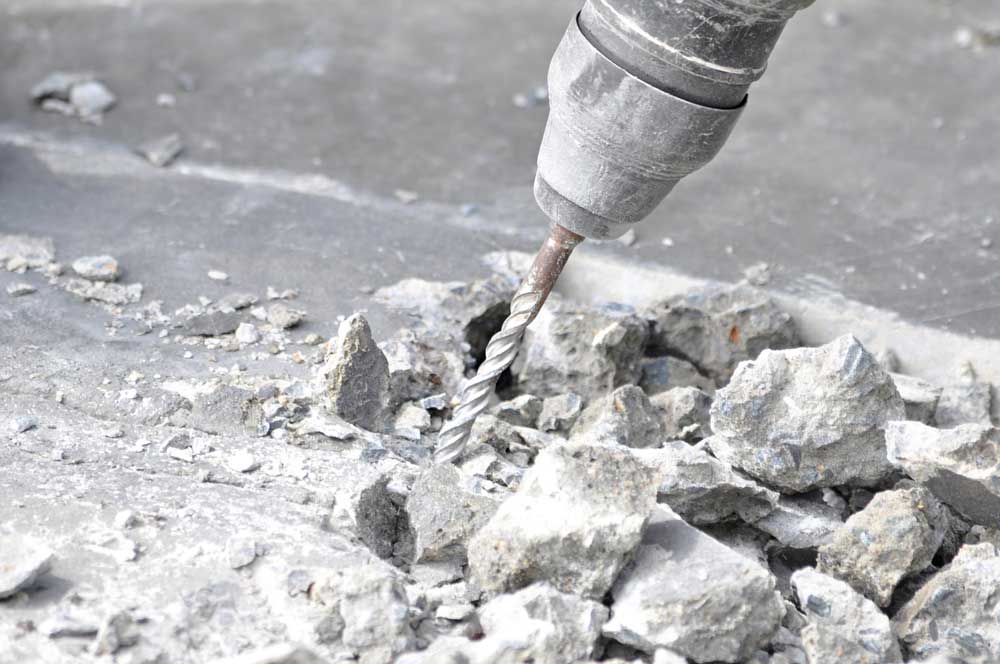Because it’s strong, durable, and has very little maintenance requirements, concrete is the most popular material for driveways and walkways. But like most materials, it will wear out over time. Everyone will show signs of age with wrinkles and gray hair. Concrete will show its age with cracks and holes. If you see any of these signs, you might be wondering if you should replace the entire slab or try to repair it. While there are times when it’s a good idea to replace your concrete, there are times when it’s not even necessary. In fact, concrete repair can be a great way to add new life to your slab.

Common Concrete Problems
When it comes to keeping your concrete in good condition, knowing which issues can and can’t be repaired can save you a lot of money over the long term. Some of the common issues related to concrete include the following:
- Raised or Sinking Slabs — Raised or sinking slabs are usually the result of natural soil settlement, compaction, or erosion (which can be caused by water or animals). In most situations, both interior and exterior sunken slabs can be lifted back to their original position with professional concrete leveling services. So, they won’t have to be replaced.
- Breakage, Missing Chunks, or Chipping — This can be caused by heavy impact, freeze-thaw cycles, or age-related deterioration. Small chunks or chips can usually be repaired by applying a patching compound. But if the damage is too extensive or has affected the concrete’s integrity, replacing it would be a better option.
- Uneven Surface Texture — If you see this on an exterior slab (including rough or spalled areas), it’s most likely caused by exposure to salt and freeze-thaw cycles. There is no long-term concrete repair solution for uneven surface texture on exterior slabs, but thoroughly cleaning and sealing the concrete with a good penetrating sealer can slow down its progression.
- Discoloration or Oil Stains — If you don’t clean and seal your concrete surface on a regular basis, these issues can build up over time. Surface stains and mold can usually be removed or reduced by applying a stain-fighting product with a pressure washer. But if you want to prevent this from happening in the future, you should treat your concrete with a good sealer when you’re done cleaning and removing stains.
- Cracking — This is a common problem that can be caused by freeze-thaw cycles, slab settling, as well as trauma caused by heavy equipment or vehicles. Small surface or hairline cracks can usually be sealed with concrete caulk. But if they’re too extensive or have affected its stability, a concrete replacement will most likely be necessary.
Be sure to speak to a professional for more information.
When Your Concrete Can be Repaired
In a lot of cases, concrete repair will be the most cost-effective way to deal with any issues. So, you should consider repairing your concrete in the following circumstances:
- The damage hasn’t affected its structural integrity.
- The cost to repair is a lot lower than a concrete replacement.
- The concrete is in reasonably good condition (aside from the specific problem area).
- The issue can be resolved over the long term by leveling, lifting, caulking, patching, applying an overlay (for interior slabs), cleaning, or sealing.
Be sure to speak with a professional to determine if your concrete slab can be repaired.
When You Need a Concrete Replacement
Concrete repair is often the preferred option, but there are times when it’s better to replace the entire slab. You should think about a concrete replacement in the following situations:
- The damage is too extensive, has affected too much of the surface, or has compromised its structural integrity.
- You want to add a new feature or level of functionality (such as a concrete ramp to replace a set of steps).
- The concrete has been severely deteriorated with the presence of deep cracks, extensive spalling, or widespread discoloration.
- The existing concrete has gone through a number of repairs that haven’t fixed any of the underlying issues.
At first, it can be hard to decide if it’s better to repair or replace your concrete. That’s why you need to look at the specific problem, the extent of the damage, and condition of the surface. But now that you have a general idea of what kind of concrete issues can and can’t be repaired, you might be better able to evaluate your specific situation.
If you’re looking for one of the best places for repairing or replacing concrete in Corpus Christi, be sure to get in touch with Streem Foundation Repair.
